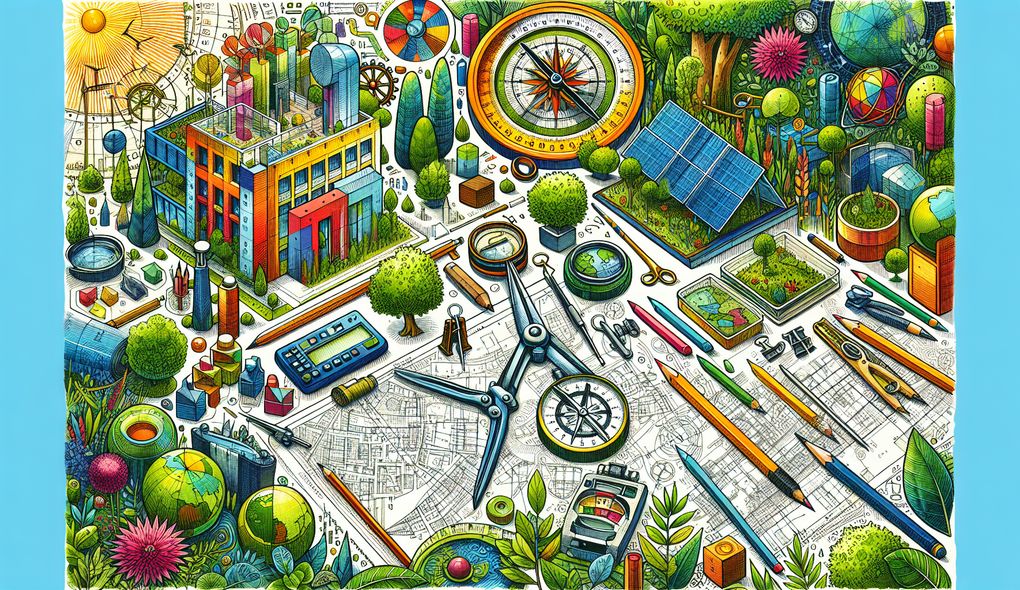What methods do you use to mentor and guide junior designers on best practices in environmental design and sustainability?
SENIOR LEVEL

Sample answer to the question:
Well, mainly, I try to be a good example in how I conduct my own work in sustainability and environmental design. For instance, I always engage in extensive research and use the appropriate modelling tools to demonstrate to the junior designers how important simulations are in creating sustainable spaces. I also consistently affirm to them the importance of LEED regulations and other building codes, demonstrating how adherence to them results in the production of top-notch work. In terms of collaboration, I often emphasize the importance of teamwork and how every person’s input is valuable - this usually involves interdisciplinary team involvement and often allows for great learning experiences.
Here is a more solid answer:
In my experience, the best approach to mentoring junior designers is 'learning by doing'. I involve them in projects, both large and small, that offer a full immersion into the practices and principles of sustainable design. For example, while working on the GreenGlow Mall project, my junior designers and I used a collaborated workflow on environmental modeling tools like AutoCAD and Rhino, that allowed us to simulate daylight, heat flow, and other environmental factors. Regarding regulations, I initiated a weekly 'code challenge' where we discuss codes relevant to the projects we're handling. This not only helped everyone keep up-to-date but also built a habit of understanding rules rather than just memorizing. Moreover, I find that collaboration is built from an environment of open communication and trust. Making a platform available for everyone to share their ideas irrespective of their experience has encouraged inclusiveness and spurred innovative discussions. Through demonstrative leadership, I strive to inspire passion and sense of responsibility in sustainability and environmentally conscious design among junior designers.
Why is this a more solid answer?
This answer is better as the candidate uses specific examples of projects, tools, activities and approaches to mentoring. It shows the candidate's hands-on approach, the ability to foster a collaborative environment, and an adept understanding of regulations. The techniques implemented suggest strong organizational skills and leadership. However, the answer could be improved by showing how the candidate handles potential challenges in mentorship, or how they adapt to the personal learning needs of different juniors.
An example of a exceptional answer:
My mentoring philosophy thrives on three concepts: Exemplify, Engage, and Empower. As an environmental designer with over seven years of experience, I Exemplify by leading with actions. For instance, during the Eco-Park project, I led my team by consistently using Revit and EnergyPlus for environmental simulation, encouraging them to visualize the environmental impact of our design choices. I Engage them in decision-making processes and real-world projects. When we were developing a zero-energy building, I actively involved my juniors in brainstorming sessions, discussions, and client meetings, nurturing their conceptual and spatial design abilities in real settings. I appreciate the unique perspective each junior brings to the table and I make a point to validate their ideas during these discussions. Lastly, I Empower them by providing constructive feedback and fostering a nurture-oriented environment. I implemented a 'peer-review' system in our team, which encourages mutual learning while enhancing their understanding of sustainability principles. When it comes to regulations, we have a dedicated 'Code Corner' with all the latest regulations and codes. It has become an integral part of our project planning stage ensuring that we’re always up-to-date. While my methods adapt to their individual learning styles and professional development needs, their progress, feedback and the successful projects we’ve delivered over the years reassure me that this approach works.
Why is this an exceptional answer?
The exceptional answer provides an in-depth insight into the candidate's mentoring methods and philosophy. Distinct examples of projects, tools, activities, and approaches provide tangible evidence of their skill, application, and dedication. This answer also illustrates the candidate's leadership style, adaptability, and personalized touch in nurturing junior designers, thereby making the environment conducive for learning and development. The candidate has shown how they've integrated every required skill into the job description and how their methods lead to successful outcomes.
How to prepare for this question:
- Work on specific examples to demonstrate each one of the mentioned skills. Recall situations where you taught or supervised the use of modeling tools, application of regulations, or sustainable design principles.
- Reflect on how you've fostered a collaborative and inclusive environment. Consider instances when you supported a junior designer and how it helped their growth or benefited the project.
- Think about unique methods you implemented for imparting knowledge and keeping yourself and your team updated with latest regulations, trends or technologies.
- It could be beneficial to discuss mentoring challenges you faced and how you overcame them, showing your ability to adapt and resolve issues.
- Review the job description thoroughly, understand their requirements and tailor your answer to highlight skills that match those requirements.
What are interviewers evaluating with this question?
- Expertise in sustainable design principles
- Proficiency in modeling tools
- Knowledge of environmental regulations
- Ability to work collaboratively
- Mentoring junior designers
- Leadership

